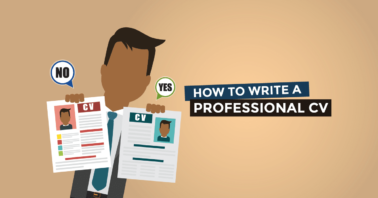The media industry is one of the most dynamic competitive sectors in the world, with a constant demand for creative and skilled professionals. Whether you are a journalist, a marketer, a social media manager, a content creator, or a graphic designer, you need to showcase your work and abilities in a way that attracts attention and recognition from potential employers or clients. That’s why having a portfolio is essential for anyone who wants to succeed in the media industry.
A portfolio is a collection of your best and most relevant work samples and some information about yourself, your skills, and your achievements. It can be in the form of a website, a blog, a PDF document, a video, or a combination of different formats. A portfolio serves as a visual resume that demonstrates your expertise, your style, and your personality. It can also help you network with other professionals, learn from feedback, and improve your craft.
But how do you create a portfolio that stands out in the media industry? How do you present your projects in a way that showcases your value and your potential? Here are some tips and best practices to help you build a portfolio that will impress anyone who sees it.
1. Know your audience and your goals.

Before creating your portfolio, you need a clear idea of who you are targeting and what you want to achieve. Are you looking for a specific job or a freelance gig? Are you trying to reach a particular niche or a broad audience? Are you aiming to showcase your versatility or your specialisation? These questions will help you tailor your portfolio to suit your audience and goals. For example, if you are applying for a social media marketing position, you should focus on your campaigns, metrics, and results. As a freelance graphic designer, you should showcase your range of styles, creativity, and testimonials.
2. Choose your best and most relevant work samples.
Your portfolio should include your most impressive and recent work samples reflecting your skills and goals. You don’t need to include everything you have ever done, but instead, select the projects that highlight your strengths and achievements. You should also consider the relevance of your work samples to your audience and goals. For example, if you are a journalist who wants to work for a sports magazine, you should include your articles on sports topics rather than your articles on politics or entertainment. You should also update your portfolio regularly to keep it fresh and current.
3. Provide context and details for each work sample.

Your portfolio should not only show your work samples but also explain them. For each project, provide context and details that help the viewer understand what you did, how you did it, and why. You should also include measurable outcomes or feedback demonstrating your work’s impact and value. For example, suppose you are a social media manager who created a viral campaign. In that case, include the number of views, likes, shares, comments, and conversions your campaign generated and some positive reviews or testimonials from your clients or audience.
4. Use a clear and attractive layout and design.
Your portfolio should be easy to navigate, read, and view. You should use a clear, consistent layout and design that best showcases your work samples. You should also use high-quality images, videos, and fonts that match your style and brand. You should also ensure your portfolio is responsive and compatible with different devices and browsers. You can use online tools and platforms, such as [Copyfolio], [CareerFoundry] or [WordPress], to create your portfolio website easily and quickly.
5. Include some personal and professional information.
Your portfolio should not only show your work but also tell your story. Please include some personal and professional information that introduces yourself, your background, your skills, and your passions. You should also have your contact details, social media links, and resume or CV. You can also add testimonials, awards, or recognitions that showcase your credibility and reputation. You should also include a call to action inviting the viewer to contact, hire, or follow you.
A portfolio is a powerful tool that can help you to stand out in the media industry. By following these tips and best practices, you can create a portfolio showcasing your work, skills, and personality in a way that attracts and impresses your audience and your goals. You can also check out some of the best social media portfolio examples and some of the best marketing portfolio examples to get inspiration and ideas for your portfolio. Good luck, and happy creating!





